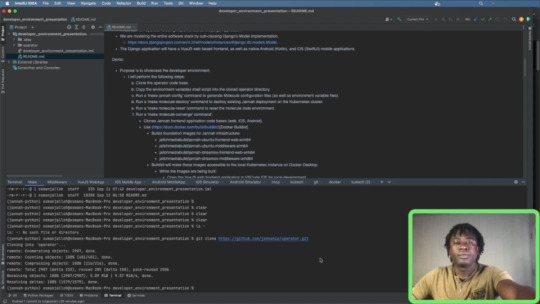#allocation
Text
Energy allocation in polymorphic Brown Trout
5 notes
·
View notes
Text
Burning Man: Experiencing Rationing
Susan and I went to Burning Man this year for our first time. We had a wonderful experience together with our friends Cindy and Robin (who is an experienced Burner and acted as our guide). There are many justified criticism of Burning Man and the festival will likely to have to change substantially over the coming years (a subject for a future post).

Today I want to write about the absence of prices at Burning Man. Once you get to Black Rock City, everything is free (well, not everything, as ice was $20/bag -- more on that shortly). People have written about hopes and aspirations for a gift economy before but my key takeaway was about the importance of allocation mechanisms.
Without prices at Burning Man everything is rationed. You can go have a free drink at any of the bars (remember to bring your own cup and your ID -- yes, that's strictly enforced). But the bartenders will pour you a limited amount and then send you on your way. Same goes for all other goods and services. There are defined quantities available and that's what you get.
Now "rationing" has a negative connotation but it isn't inherently bad. It is a different allocation mechanism that has pros and cons when compared to the price mechanism. One advantage is that rationing treats people equally independent of their financial means, which can be desirable from a social cohesion perspective (well, rationing does that at least in theory -- back to that shortly). A disadvantage is that the signal of demand relative to supply are inventory and queue based. If you run out of stuff and have long queues, demand clearly exceeds supply. That is a lot harder to track than price and unlike price doesn't provide any inherent incentives for changing the supply (high prices usually provide high profits, which in well-functioning markets results in expansion of supply -- important note: we don't have a lot of well functioning markets these days due to concentration).
Now ice, one of the most important items given the extreme heat, did have a price of $20/bag. But because that price was fixed at $20 rationing was still needed. One day for example the ice trucks were only giving out three bags per person, which turns out to be a challenge if you are trying to pick up ice for your entire camp.
Keeping money out of the system entirely is actually quite hard. Why? Because rationing and queuing make a fertile ground for favoritism and bribes. If you know someone who can let you in the back door or you come "bearing gifts" you may be able to skip a line and obtain far more goods than you would be entitled to under the official rationing scheme. Susan and I were at Burning Man for five days and witnessed quite a few instances of this.
Experiencing all of this firsthand is exciting because it turns allocation mechanisms from a dry subject into a lived reality. Many discussions of the trade-offs involved in social and economic systems would be more honest if people had access to more diverse experiences (e.g. through travel).
Consider for example the discussion around higher education. To be clear upfront, I believe the US system of higher education is fundamentally broken and badly needs deep reforms. Still, too many people who advocate for free higher education seem to have given zero thought to the allocation questions that arise. In places where higher education is free, there are rationing schemes in effect. Some of these schemes are based on prior grades and admission testing, such as in Germany. Others, such as Switzerland, put up gating classes where early on a large percentage of students are failed.
Again, I am not saying these systems are bad and the US system of outrageous tuition and fees is good (especially because it still includes rationing). I am arguing that you cannot get around having some kind of allocation mechanism for limited resources (such as lecture halls and professors' time). That is of course why I am a huge proponent of making as much human knowledge digitally accessible as possible in my book The World After Capital, because with zero marginal cost we can in fact let everyone have access. I am also not advocating for attempting to use the price system everywhere because some of the most important things cannot have prices.
Instead my point here is as follows: (1) for limited resources when you don't have prices, you need rationing. And (2) rationing is hard to get right, which means you need to put a lot of thought and effort into it, including considering capacity signals and avoiding corruption. This is worth keeping in mind whenever you propose that something should be free.
9 notes
·
View notes
Photo

#excellence #diligence #passion #ambition #executive #leadership #legislative #advocacy #philanthropy #charity #privatesector #appropriation #publicsector #business #government #asset #allocation #🇺🇸🇺🇸🇺🇸 #💰💰💰 #USA #businesstravel #✈️✈️✈️ (at Art Basel Miami Beach) https://www.instagram.com/p/CoOIoxPs6wg/?igshid=NGJjMDIxMWI=
#excellence#diligence#passion#ambition#executive#leadership#legislative#advocacy#philanthropy#charity#privatesector#appropriation#publicsector#business#government#asset#allocation#🇺🇸🇺🇸🇺🇸#💰💰💰#usa#businesstravel#✈️✈️✈️
2 notes
·
View notes
Text

"Markets are not perfect, but they are the most efficient and fair mechanism for resource allocation."
25K notes
·
View notes
Text
Le casse-tête du logement
Il existe plusieurs dispositifs et aides en France qui peuvent vous accompagner dans vos démarches de recherche de logement. Voici un guide pour vous orienter :
Trouver un logement en urgence :
Résidences Hôtelières à Vocation Sociale (RHVS) : Pour un hébergement temporaire en RHVS, consultez le site Cerema ou le guide pratique du gouvernement.
Aides financières :
Aide personnalisée au…

View On WordPress
0 notes
Text
3 AI Selected: These Altcoins Should Be in the Ülkü Portfolio in 2024!
Artificial intelligence (AI) tools, although inaccurate, have proven useful in missions that require data collection and aggregation. Analysts approached three advanced AIs and asked them to create the ideal crypto portfolio for 2024. For this, OpenAI’s ChatGPT-4 Turbo, Anthropic’s Claude 3 Opus, and xAI’s Grok were used. Additionally, he asked them to show their portfolio allocation considering…

View On WordPress
0 notes
Text
Maximizing Value with Purchase Price Allocation Services
In the realm of mergers, acquisitions, and business combinations, understanding the true worth of assets is paramount. This is where Purchase Price Allocation (PPA) services play a pivotal role, offering a systematic approach to assigning values and maximizing the benefits of a transaction. Whether navigating a merger or acquiring a new business, PPA services provide invaluable insights into the allocation of purchase prices.
At its core, Purchase Price Allocation is a structured method of assigning the purchase price of an acquired company to its identifiable assets and liabilities. This process involves a meticulous examination of tangible assets such as property, equipment, and inventory, as well as intangible assets like intellectual property, brand value, and customer relationships.
One of the key benefits of PPA services is clarity in financial reporting. By accurately allocating purchase prices to specific assets, companies ensure compliance with accounting standards such as ASC 805 (formerly SFAS 141R) and IFRS 3. This transparency enhances the credibility of financial statements, instilling confidence in stakeholders and investors.
Moreover, PPA services provide insights into the fair value of acquired assets, enabling companies to make informed strategic decisions. Understanding the true worth of intangible assets, for instance, can influence marketing strategies, licensing agreements, and capital investment plans. This knowledge empowers companies to leverage their assets effectively, driving growth and profitability.
For investors and acquirers, PPA services offer a roadmap to maximizing returns. By identifying undervalued assets or potential synergies, investors can optimize their investment strategies. This strategic advantage extends beyond the transaction phase, shaping post-acquisition integration and operational efficiencies.
0 notes
Text
Pots for the Eurovision 2024 Semi-Final allocation revealed
Ahead of the Semi-Final allocation draw for #Eurovision 2024, the pots in which the participating countries in the Semi-Final are allocated have been revealed. #ESC2024
Tomorrow the official hand-over of Eurovision 2024 will take place. During this the semi-final allocation draw for Eurovision 2024 will take place. The pots that each country will be in have now been confirmed by the EBU.
Which pot did everyone get allocated to?
The countries have been allocated into to the following pots:
Pot 1
Albania 🇦🇱
Austria 🇦🇹
Switzerland 🇨🇭
Croatia 🇭🇷
Serbia…

View On WordPress
#allocation#esc#esc 2023#eurovision#eurovision 2023#eurovision song contest#eurovision song contest 2023#handover#liverpool#semi-finals#turin#ukraine#united kingdom
1 note
·
View note
Text
Rsa et Insertion - Site du Département de l'Hérault
La loi généralisant le RSA a confié aux Départements la responsabilité de la mise en œuvre du RSA et de la politique d’insertion des allocataires.
Dans cette rubrique
Le RSA
Etre allocataire du RSA
Le parcours d’insertion personnalisé
Des actions d’insertion sur mesure
L’insertion par l’activité économique (IAE)
L’accompagnement à la création d’activité
L’économie sociale et…

View On WordPress
#accompagnement#allocation#dispositifs#indemnisation#information#mobilité#orientation#outils#rsa#structure
0 notes
Text
The Reflection of “I Will Teach You to Be Rich” from Ramit Sethi (vol.44)
One of the problems for Bitcoin is irregular returns, even though it showed a super high return rate compared with the S&P 500.
Comment for Bitcoin
One of the problems for Bitcoin is irregular returns, even though it showed a super high return rate compared with the S&P 500. In some sense, Bitcoin is nothing different from gambling.
Action steps for investing
The first thing you should do for investing is to find your investing style. What to buy in choosing a fund is determined by your style. Next, check your balance…
View On WordPress
0 notes
Text
Developer Environment Presentation 1 Part 3: Reset, and Install New Jannah Deployment
As part of day to day developer experience. Typically run make molecule-reset molecule-converge command to reset, and install new Jannah Deployment.
Rebuilds foundation images for Jannah infrastructure.
Video Highlights
Purpose is to showcase the developer environment (day to day developer experience).
I performed the following steps:
Run a ‘make molecule-reset’ command to reset the molecule state environment.
Run a ‘make molecule-converge’ command’. (i,e molecule converge)
Clones Jannah frontend application code bases (web, iOS, Android).
Django Middleware…

View On WordPress
#Allocation#ansible#App#application#artificial#Commands#Configuration#container#Converge#CPU#Data#Developer#devOps#django#docker#Environment#Files#frontend#Intelligence#Jannah#Kubernetes#learning#Local#Logs#machine#makefile#Memory#middleware#model#Module
0 notes
Text
youtube
#type#revenu#salaire#allocation#familiale#business#autre#commission#titre#financier#prestation#Youtube#job#etudiant
0 notes
Text
What are some practical overall Best Budgeting Tips.
Financial Management Tips.
In an era where financial management has never been more crucial, harnessing the power of technology to take control of your finances is no longer a luxury—it’s a necessity.
2023-2024 Expense & Budget Tracker
Elevate your financial well-being with the “2023-2024 Expense & Budget Tracker” – your essential companion on the journey to financial empowerment. This…

View On WordPress
#allocation#bank#budget#dollar#empower#expense#finances#income#limits#management#monetary#money#paycheck#personal#Quicken#spending#strategies#technology
0 notes
Text
The V-Sport repo is public
I've cleaned up my Vulkan-based project and pushed it to a public repo at GitHub. In case you're curious, here's the URL: https://github.com/stephengold/V-Sport
Going public is important because, as I mentioned in my first Tumblr post (in March), pushing commits to GitHub is an important piece of my backup strategy. Prior to last night, loss of my laptop would've meant a complete loss of the project. (I'd still have the knowledge gained from doing the work, of course.)
In the tutorial, I've reached "Texture mapping" (Chapter 23), so I'm nearing the end. If you compare V-Sport with the tutorial repo, you'll find they've diverged a lot. Some of that's due to my stylistic preferences (such as avoiding star imports and ordering fields and methods alphabetically). But increasingly I've begun refactoring the source code to reduce duplication and make it easier to maintain. For instance, I created a BufferResource class (to allocate index buffers, UBOs, and vertex buffers) and a checkForError() method to handle return codes from the Vulkan API.
Ease of maintenance is important because I expect this project to continue evolving after I complete the tutorial. I envision it as a replacement for the (OpenGL-based) Sport graphics engine that I'm using in my Libbulletjme project.
#open source#software engineering#refactoring#vulkan#3d graphics#github#backup#coding#software development#java#jvm#software maintenance#computer graphics#allocation#making progress#status#continuing education
1 note
·
View note
Text
Quotes from the Legendary Analyst: Check Out MANA Coin and These 15!
In the dynamic world of cryptocurrency trading, navigating among all the different crypto assets can be an overwhelming task, especially when thousands of altcoins are competing for attention and it can be difficult to ignore the noise to focus on those that represent the most promising investments. With this in mind, veteran crypto expert Michaël van de Poppe has presented several strong…

View On WordPress
0 notes